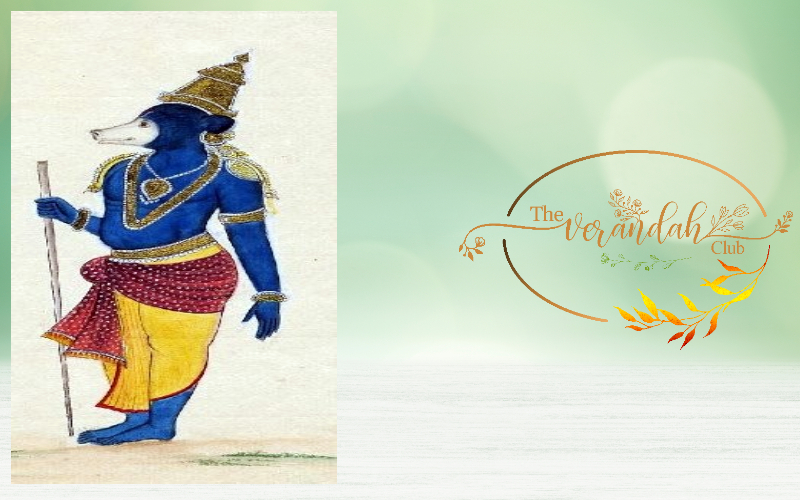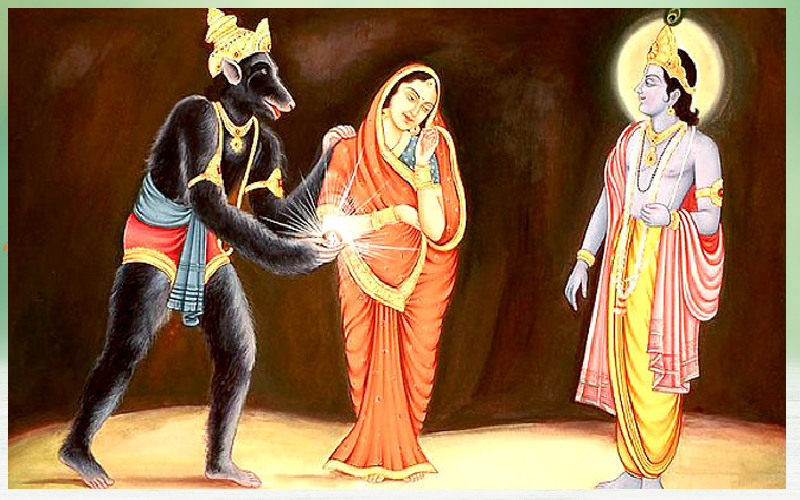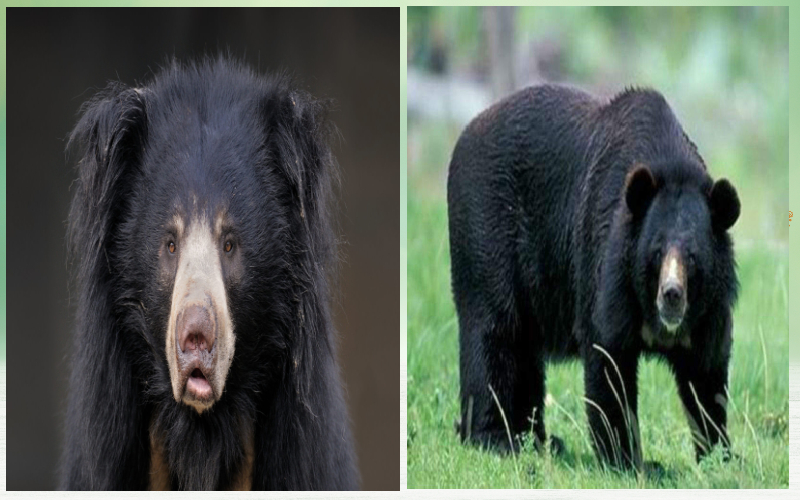Bear

Rāmāyaṇā
Jāmbavān, the
bear, appears in the Rāmāyaṇā where he is addressed as a ‘Rikṣa’ and as a ‘Vānarā’.
The second appellation, particularly, for a bear that has no resemblance to nor
has any relation with the monkey suggests that the word, Vānarā implies ‘Vana’
(forest), ‘Nara’ (person) or a ‘Forest dweller’.
Jāmbavān was
the oldest member of Rāmā’s army, who is believed to have seen the churning of
the ocean and Viṣnu’s incarnation as Vāmanā and is described as ‘more dead than
alive’. He is described as the incarnation of an Apsarā sent by Brahmā to
protect Rāmā and help him defeat Rāvaṇā. Jāmbavān, with his army of bears,
aided Rāmā in his war against Rāvaṇā. As the oldest member of Rāmā's army, he
was the wise old man, sage, and counsellor, who advised Rāmā, Lakṣmaṅā and the Vānarā-s
through the war.
During the
war, Lakṣmaṅā was seriously injured by a magical weapon fired by Rāvaṇā's son, Indrajit.
Jāmbavān sent Hanumān to the Himalayas where the Sanjivanī herb, which could
bring the dead back to life, grew on Droṇā and Candrā mountains between the Ṛṣabhā
and Kailasa peaks. Unable to identify the herb, Hanumān lifted and brought the
whole mountain to Lakṣmaṅā. The herb was then identified by Jāmbavān and Lakṣmaṅā
survived to kill Indrajit himself.
Jāmbavān,
as the wisest person, told Hanumān that he was the son of Vāyu and Anjanā, and
have the information that Hanumān was blessed by Brahmā and Indrā with
invincibility, but also by ‘Svecca Maraṇa’ (death by desire), by which Hanumān had
Amnesia unless he was reminded of his power.
Jāmbavān contributed to the popular belief that sloth bears are wise, a motif that resonates even in Rudyard Kipling’s ‘Jungle Book’.

Mahabharata
Jāmbavān was
born in each of Viṣnu's incarnations.
In his Kṛṣṇā
incarnation, Jāmbavān came to possess the Syamantakā jewel, which protected the
good and harmed the evil. The jewel had been given by Sūryā (the sun god) to
king Satrajit, whose evil brother, Prasenā wore it and went hunting. Prasenā was
killed by a lion, who was killed the bear, Jāmbavān. However, Kṛṣṇā was
suspected of having killed Prasenā for the jewel.
Kṛṣṇā went
in search of Jāmbavān and, after fighting him for twenty-one days, received the
jewel from Jāmbavān. Jāmbavān then became Kṛṣṇā's ally and gave his beautiful
daughter Jāmbavatī (a human) in marriage to Kṛṣṇā.
In view of Kṛṣṇā's
marriage to Jāmbavatī, it is obvious that Jāmbavān represented a tribe whose
symbol or totem was the bear, rather than actually being a bear.
Jāmbavatī, the daughter of a bear, was also the mother of Śambā who was one of the five who formed the Pancavyūhā-s (five cosmic emanations) that characterize the Pancarātrā subsect of Vaishnavism. This would have been possible only if she were human, for Śambā was human.
Jainism
The emblem of the fourteenth Tīrtankarā, Anantanātha is the bear.

Ecological
Role and Current Status
Jāmbavān is
generally recognised to have been a sloth bear. The bear’s sanctity appears to
have totemic origins for the animal does not have a known ecological role in
the areas where it is sanctified.
Sloth bears
have shaggy black coats, long snouts, large tongues, and broad, flat molars.
Their bodies, with huge feet and enormous claws, are awkward. They can
voluntarily open and close their nostrils, giving them a good sense of smell,
but their sight and hearing are poor. They are excellent climbers. Sloth bears
are insectivores, with termites as their staple diet, but they also eat leaves,
honey, flowers, and fruits. This species was fairly common in India and Sri
Lanka until as recently as twenty years ago, but they are now harder to find.
The bear is
a nocturnal animal that comes out at night in search of food, although it does
move around in the daytime in forests that are far away from human habitation.
It climbs trees in search of honeycombs and raids sugarcane fields. In central
India, it likes to eat Mahua fruit and flower, which have an intoxicating
effect.
Rāmā, hero
of the Rāmāyaṇā, is believed to have met Jāmbavān, the bear, at Kiṣkindā, near
Hampi, in Karnataka. The Goravas of Karnataka claim that Jāmbavān belonged to
their tribe and wear the bear’s hide as crown.
However, sloth bears are nonetheless captured and trained to dance by the Goravas of Karnataka and the Kalendars, a North Indian community, and killed for their bile which is used in traditional medicine. They are used as bait for bear-baiting (By dogs), once a common pastime in North India, which still continues in Pakistan, and live lives of torture and fear.

Nanditha Krishna is a historian, environmentalist, and writer based in Chennai. A Ph.D. in ancient Indian Culture, she is the director of C. P. Ramaswami Iyer and C. P. R. Environmental Education Centre. She is a professor and research guide for the Ph. D. programme of the University of Madras and has received several prestigious national and international awards.
NEXT ARTICLE

At the southernmost tip of this mesmerising ensemble lies the majestic Great Nicobar Island, boasting an impressive landmass of about 910 square kilom...

Bharath has always been a land traversed by spiritual masters/ Guru since time immemorial. These spiritual masters have always upheld the core princip...

South India contains its fair share of unique pilgrimage centres. These divine places of worship have a prominent Sthala Purana, devoted followers, di...